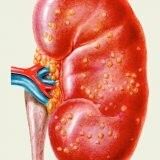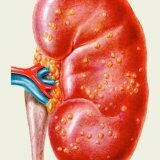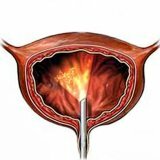Kidney disease and their symptoms

Kidney disease is common in both children and adults. Kidney disease and their symptoms and symptoms are very different and different from each other. But the best way to help you, if necessary, to understand them is a qualified nephrologist, urologist. Highly effective will be the treatment of the kidneys, only if the disease is at an early stage, if the treatment to the doctors occurred in the late stages, then the treatment process sometimes turns into a struggle for life.
The most common kidney diseases are: pyelonephritis, urolithiasis, nephroptosis, glomerulonephritis. Particularly characteristic signs of the disease are the presence of pain in the lower back, pulling back, violation of the process of urination or even until it is completely absent. This is also uremia, the presence of nephrotic syndrome, leukocyturia, acute renal colic, and as a result, the presence of nausea, high blood pressure, permanent headaches. Progressive disease and symptoms can cause irreparable harm to the whole organism or its individual systems. The reasons for which there are all sorts of kidney diseases, quite a lot.
Often, they include both congenital predisposition, and the emergence of stenosis of the renal artery, nephroptosis or atherosclerosis. This is indicated by the presence of the above symptoms. To establish the correct diagnosis, a variety of diagnostic tests will be required, from blood and urine tests to ultrasound, etc.
Glomerulonephritis
Glomerulonephritis is an inflammatory kidney disease that primarily affects the renal tubules, glomeruli developing both independently and"Thanks" to various systemic diseases. The main cause of the onset and development of this disease is the appearance of streptococcal infection, such as pneumonia, tonsillitis, malaria, and sometimes tuberculosis.
And there is a process of the onset of kidney disease due to exposure to toxic substances of this infection or when the organism is undercooled. Glomerulonephritis can occur in acute, subacute and chronic form. The acute form is characterized by such signs as edema, increased blood pressure, certain changes in the urine. The disease occurs after infection in a period of one to three weeks and is characterized by fever, back pain, the acquisition of urine of a dark brown hue, sometimes red or even black. And gradually passes into a subacute form with increased arterial pressure, pathological changes in the urine.
As for the chronic form, it has the same features and has a subdivision into such forms as nephrotic, hypertonic, mixed and latent. Diagnosis of this disease occurs due to a careful study of the patient's symptoms, indications of his tests, and if necessary, conducting a kidney biopsy.
Treatment of this disease - a process long and laborious, and sometimes smoothly stretching for several years. Includes compliance with a certain diet, use of diuretics and antihypertensive drugs. If urgent suppression of chronic inflammation is required, then corticosteroids are used for a long course of treatment. Sometimes it is possible to use pulse therapy, characterized by the introduction of one of the necessary drugs in very large doses. In the treatment of glomerulonephritis, immunosuppressants and cytostatics are also used.
Pyelonephritis
Pyelonephritis is a disease of the kidneys of an inflammatory nature, affecting both the renal pelvis, and the calyx and its parenchyma. Strangely enough, but this disease is often affected by women because of their anatomical features. The process of inflammation of the kidneys can occur both due to the influence of various microorganisms inside, and microorganisms that get out of the environment. Often, the main pathogens of this disease are E. coli, staphylococci, streptococci, which enter the kidney by the flow of blood directly from the very center of infection. There are several forms of pyelonephritis: acute, chronic, recurrent. As for the treatment of this disease, it must be carried out only under the supervision of special doctors of nephrologists and urologists. And necessarily after passing all the necessary diagnostic tests. Treatment of pyelonephritis is carried out with the mandatory use of antibiotics of a certain spectrum of action and calculated for a specific category of pathogens. Also, in the meantime, medications are added for general health purposes and a certain diet.
Nephroptosis
Nephroptosis - a disease, or more precisely a pathological condition of the kidney, in which its excessive mobility is observed, it is sometimes called a "wandering or moving kidney".Unfortunately, because of their anatomical features, women are more likely than men to have nephroptosis. The causes of this disease can be factors such as the process of rapid weight loss, persistent physical exertion of extreme severity and various injuries.
As for the treatment of nephroptosis, in the early stages it is possible to confine oneself to conservative treatment like using a special bandage, performing a certain category of exercises. If the disease is in the late stages of its development, it is often necessary to perform a special operation - nephropexy. Thanks to which the kidney is returned to its original place and strengthened there. The postoperative period should be followed by compulsory bed rest for at least two weeks, for complete fixation of the kidney.
Remember that the kidneys - this is a vital organ, on whose health the condition of your whole organism will depend.



